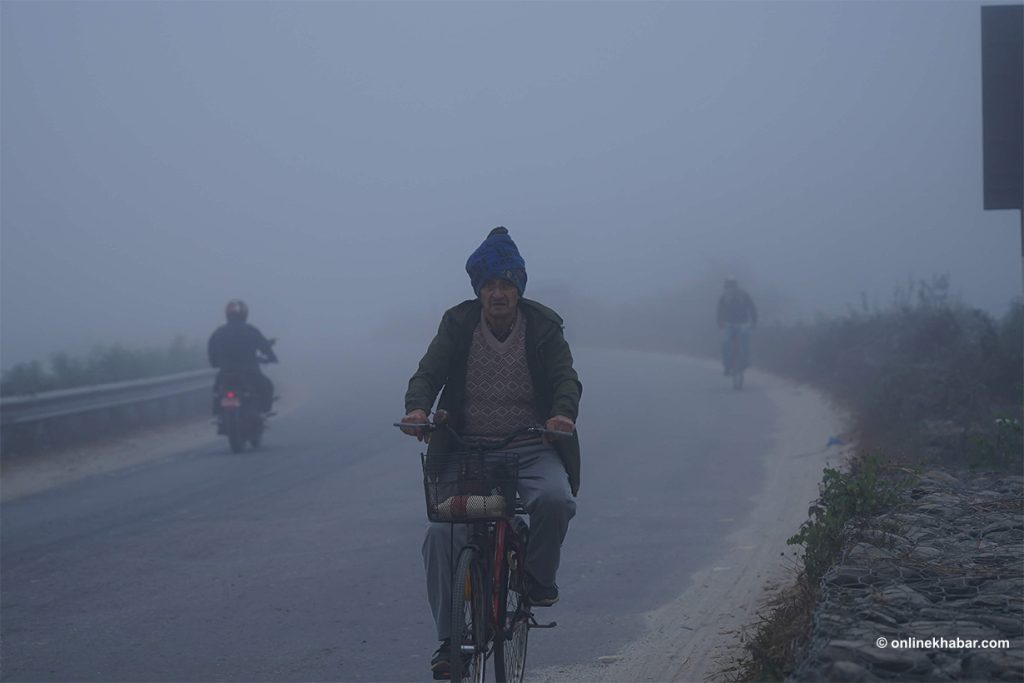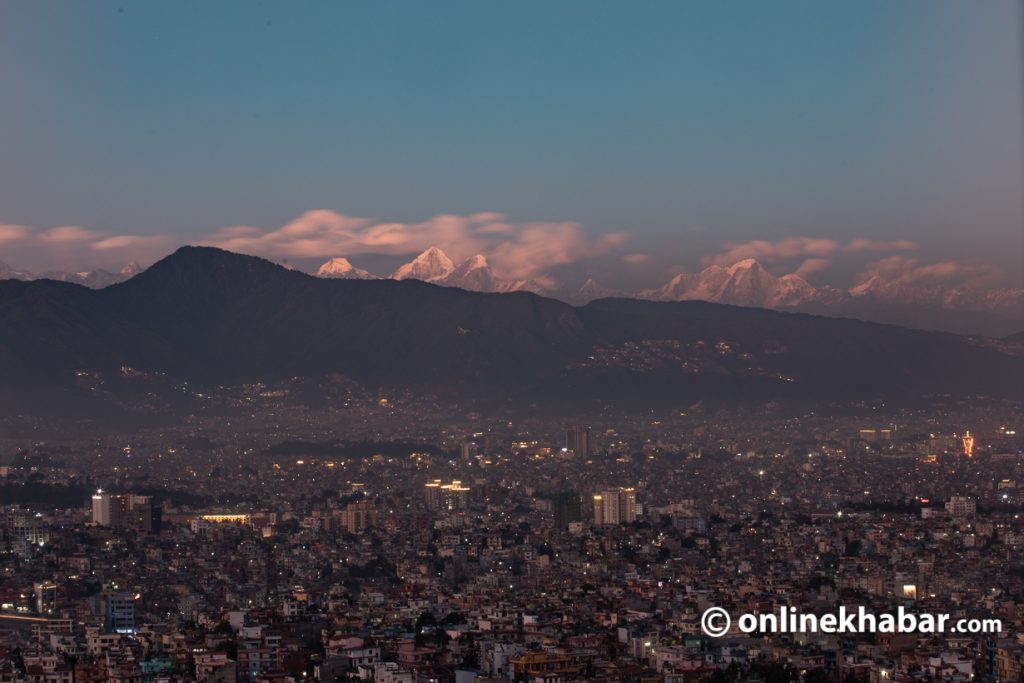
When Gao Liang, Deputy Director of the Center for Nepal Studies at Sichuan University, Chengdu, China, recently visited Kathmandu, Onlinekhabar held an extensive conversation with him covering topics such as Prime Minister KP Sharma Oli’s upcoming visits to China and India, as well as recent disputes with the two countries.
Professor Gao, who has been studying Nepali society for the past 15 years, teaches and conducts research at the Center for Nepal Studies under the Institute of South Asia Studies.
Excerpt:
You have been studying Nepal and Nepali society for 15 years. Based on your research, visits, and experiences, how do you see Nepal? What are its overall strengths, challenges, and limitations?
Because of my work, study, and research, I have been traveling back and forth between China and Nepal continuously since 2010. I have visited many places in Nepal and made friends from different regions and communities, which has helped me to closely understand Nepal’s recent social transformations.
First of all, I feel a deep affinity with Nepal. I call this country my second home. It is a very vibrant and diverse country with enormous development potential. In my observation, Nepal’s greatest strength as a state lies in its geographic position and natural resources. Although often described as weaknesses, these actually hold inherent advantages but have not yet been fully utilized.
As a society, Nepal’s strength lies in its cultural and social resilience, the country’s unity and forward momentum have not been slowed even by conflict, natural disasters, or poverty. The real challenge for Nepal is how to stabilize and effectively harness this strength, and how to transform resources into drivers of development.
How do you evaluate the seven decades of Nepal–China relations?
The 70 years since the establishment of diplomatic ties between Nepal and China also represent a period of political, economic, and social transformation. In many ways, the development journeys of the two countries show similarities. These 70 years have continuously strengthened bilateral relations, with progress made in politics, economy, culture, and other sectors.
Especially in recent years, as development partners, both countries have gained a clearer understanding of each other’s roles and positions and have advanced long-term plans. Similarly, there is broad consensus and a strong foundation for deepening friendship and cooperation between the two governments and peoples. Therefore, we can confidently say that China–Nepal relations will become even more dynamic in the years ahead.
What is your view on Nepal’s recent issues that include South Asia, its ties with China, and the changing world landscape?
The world today is at a moment of profound transformation, the kind seen once in a century. South Asia and the entire Asian region are also facing new challenges. As a major country committed to peaceful development, China wishes to play a constructive role in promoting regional peace and stability.
Countries like Nepal face the challenge of navigating economic crises, climate risks, and socio-political diversity. At the same time, there are opportunities in areas such as clean energy, the digital economy, and regional connectivity. For Nepal, the key is to remain neutral and balanced, expand avenues of cooperation, explore development possibilities in areas of strength, and enhance independence and self-reliance.
In my view, China and Nepal can advance their shared vision by cooperating in cross-border energy connectivity, infrastructure development, and cultural exchanges. In this way, Nepal’s unique geopolitical position can be transformed into opportunities for cooperation.
Based on your study of South Asian geopolitics along with China, how do you see U.S.–India and U.S.–China relations following Donald Trump’s return to power?
The Trump administration’s policies toward China and India are essentially a continuation and intensification of his first term, in some areas, even more extreme. His central argument was to contain China’s rise and its challenge to U.S. dominance. In this context, the U.S. has sought to use India as a strategic partner.
But for China and India, as neighbors and regional powers, maintaining strong relations is not a choice but a necessity. Most importantly, they must begin their bilateral relations by minimizing U.S. influence, accepting differences, managing them, and ultimately finding solutions. That is the way forward.
You have spoken about trilateral cooperation. What exactly does this mean?
China–India–Nepal trilateral cooperation is not a new idea but one that has been discussed for a long time. Simply put, Nepal can become a bridge or major corridor between China and India, transcending the geopolitical notion of being a “yam between two boulders.”
Owing to its long-standing friendly ties to both countries and its unique location between two giants that together hold over 2.8 billion people, Nepal enjoys a distinct advantage. But to harness this advantage, agreement among all three countries is necessary.”
For China and India, the basic consensus is that a stable and prosperous Nepal is in their common interest. Therefore, Nepal should not just remain “trapped between big powers” but should become an active bridge and connector. On this basis, the three countries can cooperate practically in cross-border connectivity, clean energy trade, disaster management, climate change response, and cultural and educational exchanges.

Earlier, China viewed India as a regional rival, but recently cooperation between them seems to be growing in many areas. What is your perspective?
China and India share deep similarities in their development journeys, and their historical and cultural ties are strong. In recent years, tensions have arisen due to issues like border disputes, yet economic interactions have continued to expand, reflecting resilience in their relations.
Similarly, on global issues such as climate change and opposition to unilateralism, China and India have common concerns and perspectives.
Closer and progressive relations between the two countries are important for regional stability and global influence. Recent positive signals are encouraging, and it appears relations will strengthen further, opening the way for greater cooperation.
Prime Minister Oli is visiting India via China again. How do you see the background and significance of his visits?
During his visit to China, Prime Minister Oli is expected to attend the Shanghai Cooperation Organization (SCO) Summit. He will also participate in events marking the 80th anniversary of China’s War of Resistance against Japanese Aggression and the global fight against fascism.
Nepal is also a dialogue partner of the SCO, whose role in regional security is becoming increasingly significant. This visit may inspire discussions on enhancing Nepal’s role within the organization.
Similarly, Nepal made a significant contribution to the fight against fascism, the Gurkha regiments fought bravely against Japan and Germany. This shared history is a source of pride that both countries’ peoples should remember.
Although Nepal and China signed the Belt and Road Initiative (BRI) framework last year, progress seems slow. How do you see this?
The BRI framework agreement is a significant milestone in China–Nepal cooperation. Its central vision is connectivity, policy coordination, infrastructure links, smooth trade, financial integration, and people-to-people bonds.
In this regard, there has been notable progress in bilateral cooperation. Yet much potential remains to be further strengthened and should be prioritized in the future. Especially in infrastructure like roads, power transmission lines, and pipelines, investment and implementation are complex, leaving many challenges ahead.
How firm is China’s commitment to Nepal’s railways, hydropower, and connectivity, given that Nepal is a landlocked country? Or is there already doubt about it?
The agreement to build a Trans-Himalayan Multi-Dimensional Connectivity Network is being pursued seriously by both countries. It is not only a vision but also linked to practical necessity. China needs to develop its western regions and expand external openness, while Nepal wants to overcome its landlocked condition.
China has already advanced infrastructure development on its side of the border.
The challenge now is to connect those structures with Nepal’s infrastructure, which requires strong political will and investment from the Nepali side. When I observed the border areas directly, the importance and urgency of expanding connectivity became even clearer.
In recent years, there has been more emphasis on people-to-people relations. What are its dimensions?
Cultural products and social media play important roles in enhancing people-to-people contact and mutual understanding. For example, a Chinese film shot in Nepal many years ago still inspires many Chinese to visit Nepal. Similarly, Nepali songs, videos, and other content are gaining popularity on Chinese social media. This is something industry stakeholders and policymakers should pay attention to.
Both China and Nepal have long histories and rich cultural traditions.
High-quality cultural products such as films and music can serve as vehicles for promoting exchanges while also generating economic benefits. Nepal’s natural landscapes and cultural heritage can make it an attractive destination for the Chinese film industry.
At a time when support from other international partners for countries like Nepal is declining, China seems to be showing an increasingly strong presence. How do you see this?
China has always been an important development partner for Nepal. As a developing country itself, China is willing to share its experiences with others. Chinese cooperation prioritizes practicality and direct benefits to ordinary people.
I have observed some Chinese-supported projects in agriculture (such as vegetable and tea farming), which have had positive impacts on local livelihoods. Let me clarify one thing: China prefers investing in poverty reduction, health, agriculture, and education rather than social engineering.
There is a Chinese saying: “It is better to teach someone to fish than to give him fish.” This principle guides Chinese cooperation. On this basis, China will continue supporting Nepal’s sustainable development.
The Nepali market is also seeing rapid growth in Chinese electric vehicles. Is this simply a planned commercial project by China, or does it have broader significance?
The rapid expansion of Chinese electric vehicles is not just about the transport sector but also a major step in addressing climate change.
Nepal has long been dependent on imported petroleum, which has increased air pollution, foreign exchange pressure, and economic dependency. The use of electric vehicles will help Nepal utilize its hydropower resources for transport electrification.
This will not only improve air quality and reduce environmental pressures but also lessen dependency on petroleum imports, thereby enhancing energy self-sufficiency and economic stability.
Therefore, for Nepal, this is not just about choosing green transport but a strategic opportunity toward low-carbon development, energy transition, and a sustainable future.
Finally, let’s talk about the current issue in discussion. India and China have agreed to reopen the Lipulekh trade route. Nepal is preparing to issue a diplomatic note. What is your view?
Recent developments have not fundamentally altered the long-standing situation. China respects the territorial sovereignty of all its friendly nations and neighbors. However, the issue of Kalapani, including Lipulekh, is disputed. We believe it should be resolved by India and Nepal together.
But Nepal has not yet been reassured by the recent agreement between Chinese Foreign Minister Wang Yi and his Indian counterpart S. Jaishankar. What do you say?
The Chinese Foreign Ministry spokesperson has already stated that this matter is a bilateral issue between Nepal and India, and expressed hope that the two countries will resolve it through dialogue and consultation. China remains committed to this position. We will respect the outcome that emerges from their mutual dialogue and understanding.




















